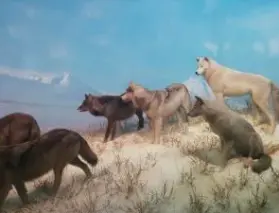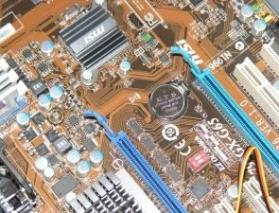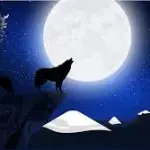We know that we carry inside us the history of our bodies—the chemistry and bones and nervous systems that have evolved over the millennia. But we carry with us another history as well. Our morality, our capacity to harm, help, or ignore each other, began with our earliest ancestors as well.
I divide this inheritance into three stages. To take them in reverse order, the most recent stage is roughly the last several thousand years during which humans have developed the laws and social codes that we live by and violate. We make and break laws, we love and hurt each other. We distinguish right from wrong and we act on the difference inconsistently.
The stage prior to this one might be dubbed the “old brain” stage. We inherited it from the reptiles and mammals whom it prompted to hunt, labor, and raise young together but also to go on the attack and to defend territory to the death. We act from our “old brain” at many of our best and worst moments.
The first stage of this moral evolution is also the least familiar. The earliest bacterial cells and later the plants, our remote cousins, live with little connection at all to other organisms. They may do some basic sharing, but they don’t hurt or help each other. Mostly, they fill their own needs. They reflect the stage in our moral development of indifference and autonomy. Let me explain.
The First Stage: Vegging Out
Plants and animals diverged a billion years ago or more, when living things were still no bigger than single cells. The first plant cells took the path of using their chemicals to turn light into food. Later they put down roots and anchored themselves in one place. Animals, on the other hand, took the very different paths of moving and eating.
When we humans (and animals too) concern ourselves mostly with our most basic physical needs and almost not at all with other people, we are, I think, living out a bit of our microorganic and plant heritage. This is a heritage of physical self-sufficiency, nutritional fundamentalism, and social indifference. Plants do connect with other organisms but in only the most essential ways. They spread their pollen to remote plants and they can send out danger signals of sorts through the air and through root systems. But mostly they are specialists in autonomy and disinterest. At those times when I’m feeling lethargic, hungry for comfort food, thirsty for wine or water, and oblivious to people or problems, I dip (to the extent that a human can) into our original amorality.
The Second Stage: Old Brain
Plants, while they are morally inert, can go it alone. But animals move, find food, chase each other, and raise offspring. They interact according to the instincts and reflexes without which they couldn’t survive. My inner animal comes to the fore when I seek out family and friends for the pleasure of their company. And this “old brain” rears its head also when I feel threatened by someone, when I get angry, when frustrations have been eating away. We’re no strangers to our nastiest impulses and rigidities, for they are our quickest defenses.
The Third Stage: New Brain
I share in the complex morality and immorality of all clever humans. I value laws and justice and in uncertain situations I think about how to do the right thing. I make a point of trying to help someone everyday. I also think about what I wish I had said to win an argument or out-maneuver someone. I strategize politically to promote my party’s sane political views over the irrationalities of the opposition. Make me much richer and more influential than I am and no doubt power would corrupt me.
So my moral world may be up-to-date in some ways, but I carry along the primal moral worlds as well. We may think of our bodily evolution as a long biological process and our moral evolution mostly as a separate, shorter history of human culture. But we can join a little closer to nature by seeing that our morality is not a totally separate story. It is here in our bodies along with the stories of our bones and our brains.
Written by Brock Haussamen
Subscribe to The Spiritual Naturalist Society
Learn about Membership in the Spiritual Naturalist Society
__________
The Spiritual Naturalist Society works to spread awareness of spiritual naturalism as a way of life, develop its thought and practice, and help bring together like-minded practitioners in fellowship.













